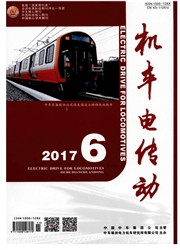

 中文摘要:
中文摘要:
为研究气动载荷下高速列车的车内低频噪声,建立高速列车空气动力学模型,采用大涡模拟( Large Eddy Simulation, LES) 法计算中间车的表面脉动压力.将脉动压力加载到高速列车的有限元模型上,通过瞬态分析得到车体的振动位移响应;将位移响应作为边界条件,采用边界元法( Boundary Element Method, BEM)分析车内噪声.结果表明:车窗振动位移最大,车顶和车底次之;中间车车厢的两端声压比中部大;在低频范围内,车厢内声压呈强弱交替分布,声场强弱界限较明显,且随着频率的增大,沿车体纵向和横向干涉条纹增多;车内低频气动噪声随速度二次方的增大而增加.
 英文摘要:
英文摘要:
To study the interior low frequency noise of high speed train under the aerodynamic loads, an aerodynamics model of high speed train is built and the fluctuation pressure of the middle train surface is calculated using Large Eddy Simulation (LES) method. The fluctuation pressure is loaded on the finite element model of the high speed train, and the vibration displacement response of the train body are obtained by transient analysis; taking the displacement response as the boundary condition, the interior noise is analyzed using Boundary Element Method (BEM). The results show that, the vibration displacement of the train windows are largest, followed by that of the roof and the bottom; the sound pressure of both ends of the compartment is larger than that of the middle ; under the low frequencies, the sound pressure in the compartment is distributed in strong-weak alternation, the boundaries between strong and weak sound fields is obvious, and the interference fringes increase along the vertical and horizontal direction of train body with the increase of frequency; and the interior low frequency aerodynamic noise increases with the increase of the velocity square.
 同期刊论文项目
同期刊论文项目
 同项目期刊论文
同项目期刊论文
 期刊信息
期刊信息
